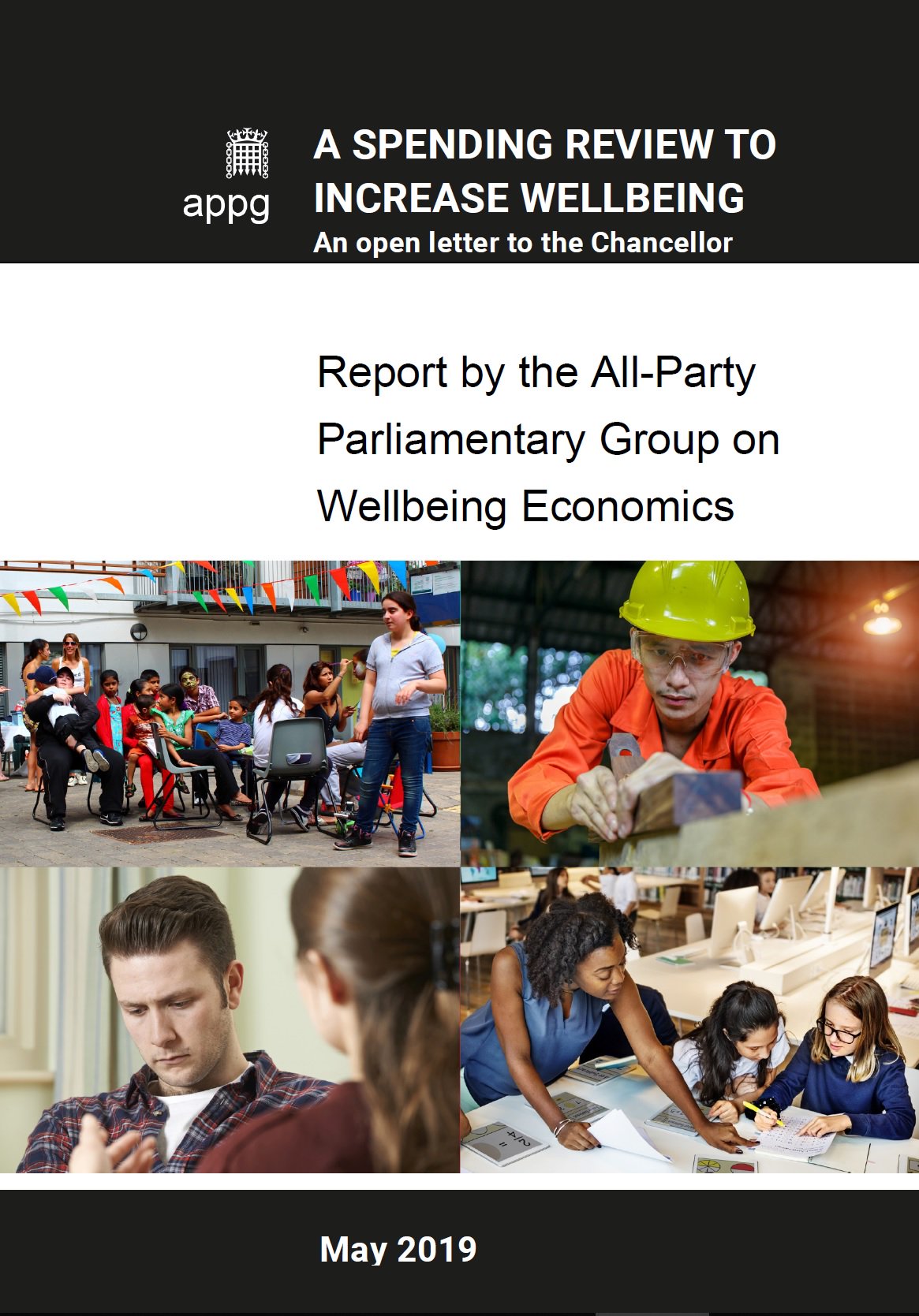EVOLUCIÓN DE CARGA DE ENFERMEDAD YCOSTES ASISTENCIALES DE UNA COHORTE POBLACIONAL DURANTE 7 AÑOS
Today we've made a presentation at the Health Economics Conference. The rethoric of increasing chronic conditions requires a precise estimates and cohort analysis is the way to proceed. This is what we have done and you can check the details in p.70 of the abstracts book.
12 de juny 2019
07 de juny 2019
Long-term care funding mess
THE PUBLIC ECONOMICS OF LONG-TERM CARE. A SURVEY OF RECENT CONTRIBUTIONS
Everybody agree that long-term care funding is a complete mess. Ten years after enacting a law, access to services is constrained by funding restrictions and bad design of benefits. A lot of people wait for benefits until die and afterwards the family receive the approval for long-term care.
What should be done?. A recent article reviews the options.
Everybody agree that long-term care funding is a complete mess. Ten years after enacting a law, access to services is constrained by funding restrictions and bad design of benefits. A lot of people wait for benefits until die and afterwards the family receive the approval for long-term care.
What should be done?. A recent article reviews the options.
LTC needs are increasing rapidly and neither the market nor the family seem to be able to meet such a mounting demand. Furthermore, the existing public programs are both insufficient and uncoordinated. For these reasons we advocate developing a full-fledge LTC public insurance scheme that would fulfill two objectives: assisting those who cannot count on any family assistance and do not have the financial means of purchasing LTC services and providing the middle class a program that would protect families against too costly spendingIs there enough public money to pay for this?
Obama by Kehinde Wiley
06 de juny 2019
Health microsystems as the unit of performance analysis
A comparative performance analysis of a renowned public-private partnership for health care provision in Spain between 2003 and 2015
A deep study has been released on performance of public-private partnerships in healthcare in Valencia compared to Spanish NHS. It is an:
PS. Opioid Epidemic CDC data
A deep study has been released on performance of public-private partnerships in healthcare in Valencia compared to Spanish NHS. It is an:
Observational study on secondary data from virtually all hospital care episodes produced in 51integrated providers (i.e., administrative healthcare areas) and 67 hospitals, in 2003 and 2015. Alzira’s2015 performance (and its variation since 2003) was compared with all public-tenured peers in the SNHS,using 26 indicators analysing the differences in age-sex standardized rates of events or risk-adjusted mortality, severity-adjusted hospital expenditure and hospital technical efficiencyAnd the conclusion is:
In this comprehensive comparative study on Alzira’s performance, this PPP has not generally outperformed public-tenured providers, although in some areas of care its developments have been outstanding.I agree on the methodology, I can't asses the results and its conclusions because it requires data replication. What it is crucial is the clinical decision making within the health organization (the microsystem and its episodes of care), forget generalizations on public and private and focus on drivers for efficiency in each setting.
PS. Opioid Epidemic CDC data
Natalia Goncharova at Tate Modern
31 de maig 2019
Wellbeing economics: a prescription letter
A SPENDING REVIEW TO INCREASE WELLBEING
An open letter to the Chancellor
UK has setup an All-Party Parliamentary Group on Wellbeing Economics. That's great!. If there is one thing that should be on the public agenda is wellbeing. However, after reading the last report it's a little bit disappointing. The have decided 6 priorities to take into account in the spending review according to its importance on wellbeing.
An open letter to the Chancellor
UK has setup an All-Party Parliamentary Group on Wellbeing Economics. That's great!. If there is one thing that should be on the public agenda is wellbeing. However, after reading the last report it's a little bit disappointing. The have decided 6 priorities to take into account in the spending review according to its importance on wellbeing.
- Health: Scaling up treatment of mental illness
- Education: Tackling children’s wellbeing in schools
- Further Education: A proper start to working life
- Social care and community services: Investing in social support networks
- Work: Better wellbeing leads to better productivity
- Other priority areas
24 de maig 2019
Cohen-Emanuel podcast
Ezekiel Emanuel on the Practice of Medicine, Policy, and Life
Ezekiel Emanuel is a reflection of his upbringing: a doctor for a father who loved to travel, a mother interested in policy and community activism, and all the competition and friendship that comes with growing up closely with two brothers. Put those together and you wouldn’t be surprised that the result is someone who has worked at both the highest levels of, medicine, policy and academia — though the intense interest in jam might surprise you.
17 de maig 2019
Opioid epidemic and the need for urgent measures
Addressing Problematic Opioid Use in OECD Countries
Some months ago I explained my concerns about opioid epidemic. I said that the problem is closer than most people think. In the last five years, there has been a 45% growth in publicly funded opioid prescription in our country. Now OCDE presents the current situation in a report that highlights where we are and what can be done. The key messages are these ones:
- Better Prescribing: Doctors can improve their prescribing practices, for instance, through evidence-based clinical guidelines (e.g. for opioid prescription, for adequate medication-assisted therapy for OUD patients), prescribers training, surveillance of opioid prescriptions, and regulation of marketing and financial relationships with opioid manufacturers. In addition, patients and the general public can also benefit from clear educational materials and awareness interventions to enhance their opioid-related literacy and reduce stigma.
- Better care: Including the expansion of coverage for long-term medication-assisted therapy (e.g. methadone, buprenorphine, naltrexone) coupled with specialised services for infectious diseases management (e.g. HIV, hepatitis) and psychosocial interventions. Some countries have implemented interventions such as the availability of overdose reversal medications for all first responders, needle and syringe programmes, and medically supervised consumption centres.Quality of care must be improved and measured.
- Better approach: There can be better coordination across the health, social and criminal justice systems. Governments can consider setting up of coordinated networks among the three sectors aiming to facilitate access to integrated services for people with OUD. In addition to health services, social interventions around housing and employment support, and law enforcement uptake of a public health approach are central.
- Better knowledge and research: Including the use of big data and impact evaluations to generate new information from different sources along with the application of advanced analytics. In addition, quality of care measurement should be enhanced in areas such as opioid prescription, OUD health care services, and patient reported indicators (e.g. PROMs, PREMs). Research and development is needed in key areas such as new pain management modalities and OUD treatments.
09 de maig 2019
Genome editing: the game of biology is about to change
Hacking the Code of Life: How gene editing will rewrite our futures
The foundations of gene editing came about because a scientist in Alacant, Dr. Mojica started to find weird DNA sequences in some bacteria he was studying. After that Profs. Doudna and Charpentier and later Prof. Zhang translated initial findings into practice. Therefore it all started when a microbiologist studied the arms race between bacteria and viruses.
You'll find all these details in a book by Nessa Carey. If you want to understand in plain words what CRISPR is and what may represent for biology, then you have to read it.
The foundations of gene editing came about because a scientist in Alacant, Dr. Mojica started to find weird DNA sequences in some bacteria he was studying. After that Profs. Doudna and Charpentier and later Prof. Zhang translated initial findings into practice. Therefore it all started when a microbiologist studied the arms race between bacteria and viruses.
You'll find all these details in a book by Nessa Carey. If you want to understand in plain words what CRISPR is and what may represent for biology, then you have to read it.
The gene editing revolution is creating a technological toolkit that almost any half-decent scientist can lean into and find something useful. On the one hand, that should make us very excited. We can both solve problems and simply indulge our curiosity. But should it also make us worried? Using chisels and a mallet, Michelangelo created some of the most exquisite sculptures we have ever seen. But give the same heavy, sharp tools to someone else, and we can get a very different and much bloodier outcome.
But the same technology can also be used to alleviate human suffering, and if we are smart enough, lessen the impact that our heavy-footed species has on the only planet we know of in the entire universe that supports complex life. We cannot un-invent this technology, we probably can’t even control its spread. So what choice do we really have but to embrace it and use it well, to create a safer, more equal world for all?
06 de maig 2019
Decentralisation in health services, is it worth it?
Decentralisation and performance measurement systems in health care
The main trends from the OECD survey results are:
It is a great report, a must read. Impossible ot summarise in few words.
The main trends from the OECD survey results are:
- Decision-making in health care tends to rest largely with the central government, which has considerable power across many aspects of the delivery of health services. More specifically, central governments are more likely to be responsible for decisions regarding the policy aspects of health care, but have less control over decisions regarding the inputs, outputs and monitoring of health care services. In most countries, sub-national governments have large responsibility for input-related matters, such as determining the outsourcing of services and deciding on the contractual status of staff. On average, local governments have little decision-making power in the health sector, but have the most responsibility with regard to decisions about health care inputs.
- The role of the central governments in health care does not vary markedly between federal and unitary countries. However, sub-national government decision-making power tends to be higher in federal than in unitary countries.
- The majority of OECD countries tends to rely on centralised performance measurement systems, especially to monitor the performance of hospital providers. Systems vary markedly between countries, although some trends across countries exist, including the observation that health performance systems are generally more geared towards improving performance rather than reducing service costs.
- Less likely to be monitored under a specific performance framework are providers of ancillary services, retailers and other providers of medical goods, and providers of preventive care. Common reasons for the non-establishment of performance systems in these sectors, and in general, include a lack of capacity at the national level, a lack of available data and challenges to co-ordinate actors.
It is a great report, a must read. Impossible ot summarise in few words.
29 d’abril 2019
How much would you pay for a gene therapy?
Perspectives on Gene Therapy: Defining and Demonstrating Value to Payers
Kymriah has been included in the NHS and nobody but the regulator knows the price. Therefore, in Spain the answer to the question about the willingness to pay for gene therapy depends absolutely on a few officials in the Ministry, not so many, and they decide in a closed meeting without any transparency and outside of any legal procedure for public budgets. And nothing happens, that's great!. Unbelievably, that's it, the price is confidential and rule of law is useless in a failed state.
PS. Therefore, take note. There is no role for health economics evaluation, forget it forever.
Kymriah has been included in the NHS and nobody but the regulator knows the price. Therefore, in Spain the answer to the question about the willingness to pay for gene therapy depends absolutely on a few officials in the Ministry, not so many, and they decide in a closed meeting without any transparency and outside of any legal procedure for public budgets. And nothing happens, that's great!. Unbelievably, that's it, the price is confidential and rule of law is useless in a failed state.
PS. Therefore, take note. There is no role for health economics evaluation, forget it forever.
Philip Stanton
25 d’abril 2019
Do sin taxes work?
The Use of Excise Taxes to Reduce Tobacco, Alcohol, and Sugary Beverage Consumption
The summary:
The summary:
Of the 188 countries that reported 2016 tobacco tax and price data to the WHO, 173 levied an excise tax on manufactured cigarettes (61). Tobacco taxes have increased in many countries since the 2005 entry into force of theWHO’s Framework Convention on Tobacco Control. The treaty emphasizes the effectiveness of tax and price increases in reducing tobacco use, particularly among young people.On average, cigarette excise taxes account for 32% of the price in LMICs and 48% in HICs. Many, but not all, countries tax some or all other tobacco products, generally at rates well below the rate imposed on manufactured cigarettes.
Nearly all governments levy excise taxes on at least some alcoholic beverages. Of the
192 countries that provided data to the WHO in 2012, 155 levied an excise tax on beer, 138 on wine, and 151 on distilled spirits; alcohol sales were banned in some of the nontaxing countries (52, 62). Alcoholic beverage excise taxes appear to be relatively low, according to the limited information provided. As with cigarette taxes, alcohol excise taxes account for a lower share of price in LMICs than in HICs (both lower, in general, than for cigarettes). Among 74 reporting countries, excise taxes as a share of retail prices ranged from a low of 0.3% in Kyrgyzstan to a high of 44.9% in Norway, with an average of 17.3%. Taxes as a percentage of price are, generally, lowest on beer and highest on distilled spirits.
In 2014,Mexico became the first country in the Americas to adopt a significant tax specifically on SSBs, a one-peso-per-liter tax that raised taxed beverage prices by about 10% (13). Since then, other countries have adopted more significant taxes to reduce SSB consumption and promote health, including several US localities, South Africa, the United Kingdom, Ireland, Portugal, Saudi Arabia, the United Arab Emirates (UAE),Dominica, and Barbados.Most aim to raise retail prices by at least 10%, with a few resulting in more significant increasesWell, unfortunately the article explains the current status (and it helps) though the impact is much more difficult to measure.
24 d’abril 2019
Succesful populists: the age of elected despots
These are selected paragraphs from Martin Wolf excellent op-ed Elected despots feed off our fear and rage:
To be successful, a populist demagogue has to project belief in himself as a man of destiny. Self-obsession and even megalomania help; they may well be essential. In a compelling book, Disordered Minds, the Irish writer Ian Hughes suggests such men are narcissists or psychopaths. To a non-expert eye, they do appear deranged. How else can one sell the idea that “I alone am the people’s salvation” to oneself?
If such a leader wishes to subvert democracy, it is, alas, not that hard to do, as Harvard’s Steven Levitsky and Daniel Ziblatt argue in How Democracies Die. First, capture the referees (the judiciary, tax authorities, intelligence agencies and law enforcement). Second, sideline or eliminate political opponents and, above all, the media. Third, subvert the electoral rules. Supporting these assaults will be a fierce insistence on the illegitimacy of the opposition and the “fakeness” of information that does not align with whatever the leader finds useful to state.
People will want to trust such a leader whenever they desperately wish to believe that someone powerful is on their side in an unjust world. That is what happens when trust in the institutions and norms of a complex democracy falters. When faith in sober policymaking disappears, the charismatic figure emerges as the oldest kind of leader of all: the tribal chieftain. When things become this elementary, the difference between developing and so-called advanced democracies can well melt away. True, the latter have stronger institutions and norms and a more educated electorate. In normal circumstances, that may be enough to resist. Some argue it will remain enough. Yet, we are human. Humans adore charismatic despots; they always have.
21 d’abril 2019
Theranos details explained: the "inventor" that fooled so many smart people
The Inventor: Out for Blood in Silicon Valley (2019)
Former posts have explained the story, now a 2h. HBO documentary adds details:
Former posts have explained the story, now a 2h. HBO documentary adds details:
19 d’abril 2019
On the effectiveness of digital health technologies
EVIDENCE STANDARDS FRAMEWORK FOR DIGITAL HEALTH TECHNOLOGIES
Every other day we here about a new health app, and new digital advances in healthcare. Too often, any innovation is considered effective without any deep analysis. Now, NICE provides a guide for this specific issue.
Every other day we here about a new health app, and new digital advances in healthcare. Too often, any innovation is considered effective without any deep analysis. Now, NICE provides a guide for this specific issue.
The economic impact of a DHT can be assessed using an appropriate analysis of the economic information collected. The type of economic analysis done should be determined by the financial consequences of adopting and implementing the DHT from a payer or commissioner perspective. The appropriate level of economic analysis depends on the type of decision needed and likely financial commitment. To reflect the range of commissioning decisions associated with DHTs, we have proposed 3 levels of economic analysis (see table 8).
Many DHTs will start at a basic economic analysis level but, with additional information and data about the technology and its comparators, a more robust economic analysis can be undertaken. The higher levels of economic analysis needed depends on the financial commitment required including, for example, the level of upfront investment, the likelihood of opportunity costs and the certainty of the realisation of the benefits.
18 d’abril 2019
Subscriure's a:
Missatges (Atom)






